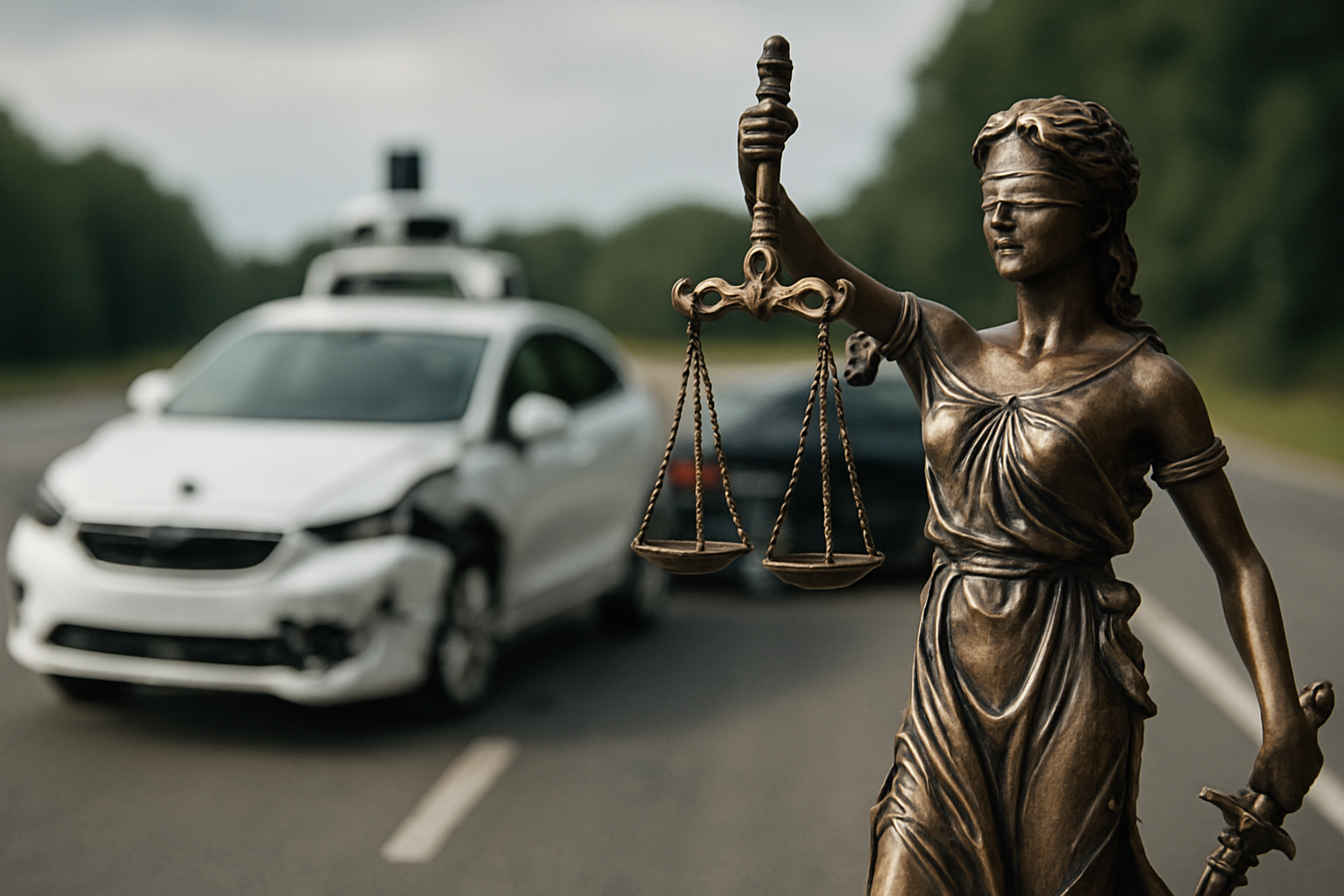Title: Navigating the Legal Maze of Autonomous Vehicle Liability
Introduction: As self-driving cars transition from science fiction to reality, the legal landscape surrounding autonomous vehicle liability is evolving at a rapid pace. This article delves into the complex web of legal challenges, regulatory frameworks, and ethical considerations that arise as we navigate the uncharted territory of driverless technology on our roads.

Traditional Liability Models and Their Limitations
Existing liability frameworks for motor vehicle accidents primarily focus on driver negligence. When human error is the cause of an accident, determining fault is relatively straightforward. However, as vehicles become increasingly autonomous, this model becomes inadequate. Who is liable when an AV makes a decision that leads to an accident? The vehicle manufacturer, the software developer, the owner, or some combination thereof? These questions challenge our traditional understanding of liability and require a reevaluation of legal principles.
Emerging Legal Frameworks for AV Liability
Legislators and policymakers around the world are grappling with how to adapt existing laws to accommodate AVs. Some jurisdictions have begun to implement specific regulations for autonomous vehicles. For example, Germany passed legislation in 2021 that allows for the commercial use of Level 4 AVs on public roads, with clear guidelines on liability. The law places primary responsibility on the vehicle owner but allows for manufacturer liability in cases of technical failure. In the United States, several states have enacted laws addressing AV testing and deployment, but a comprehensive federal framework is still in development.
Product Liability and the Role of Manufacturers
As the role of human drivers diminishes, the focus of liability is likely to shift towards product liability. Manufacturers of AVs and their components may face increased scrutiny and potential liability for accidents caused by defects in their products. This could include issues with sensors, software glitches, or flaws in the AI decision-making algorithms. The concept of strict liability, where manufacturers are held responsible regardless of fault, may become more prevalent in AV cases. This shift could have significant implications for how AVs are designed, tested, and insured.
Data Privacy and Cybersecurity Concerns
The operation of AVs relies heavily on data collection and processing, raising important questions about privacy and data protection. AVs constantly gather information about their surroundings, including potentially sensitive data about passengers and pedestrians. Legal frameworks will need to address how this data is collected, stored, and used, ensuring compliance with existing privacy laws such as the EU’s General Data Protection Regulation (GDPR). Additionally, the potential for cyberattacks on AVs presents a new frontier in vehicle safety and liability. Manufacturers and operators may be held responsible for ensuring robust cybersecurity measures to protect against hacking and unauthorized access.
Ethical Considerations and Algorithmic Decision-Making
One of the most challenging aspects of AV liability involves the ethical decisions programmed into these vehicles. In emergency situations where harm is unavoidable, how should an AV be programmed to respond? Should it prioritize the safety of its passengers over pedestrians? These ethical dilemmas, often referred to as the “trolley problem,” have significant legal implications. Legislators and courts will need to grapple with how to assess liability when an AV makes a decision that results in harm, even if that decision was the result of pre-programmed ethical guidelines.
The Future of Insurance in the Age of AVs
The insurance industry is poised for significant disruption as AVs become more prevalent. Traditional auto insurance models based on driver risk may become obsolete. Instead, we may see a shift towards product liability insurance for manufacturers and new forms of coverage for AV owners. Some experts predict the emergence of a no-fault insurance system for AVs, where compensation is provided regardless of who is at fault. Insurance companies are already developing new products and pricing models to address the unique risks associated with autonomous technology.
In conclusion, the legal landscape surrounding autonomous vehicle liability is complex and rapidly evolving. As technology continues to advance, lawmakers, courts, and industry stakeholders must work together to develop comprehensive and flexible legal frameworks. These frameworks must balance the need for innovation with public safety concerns, address new forms of liability, and tackle the ethical challenges posed by AI decision-making. The decisions made in the coming years will shape not only the future of transportation but also our broader understanding of liability in an increasingly automated world.




